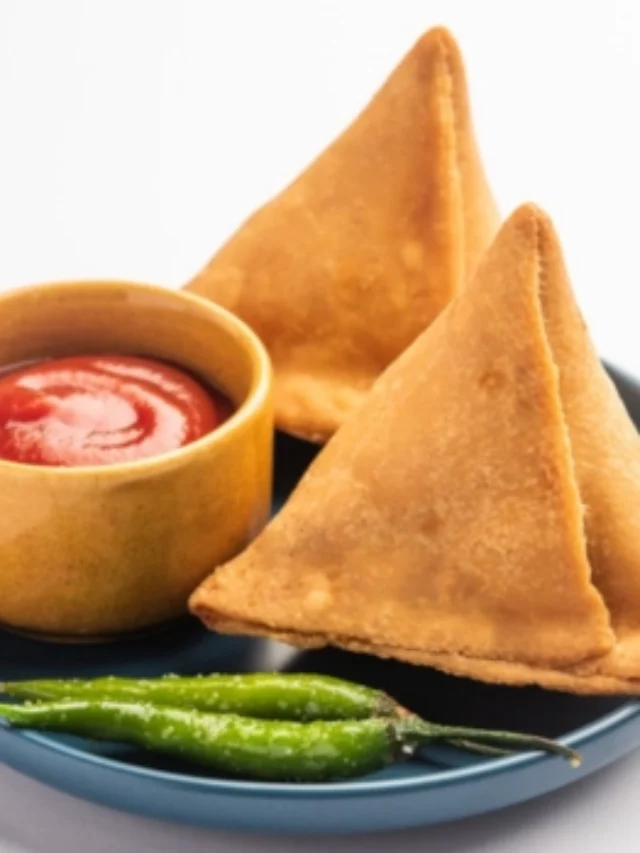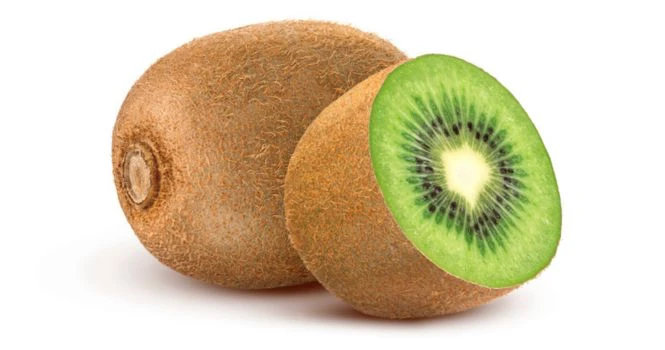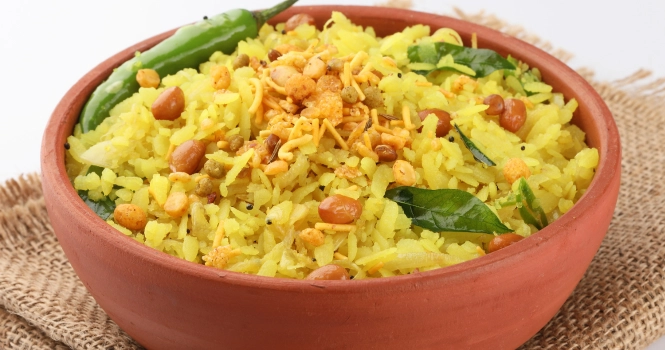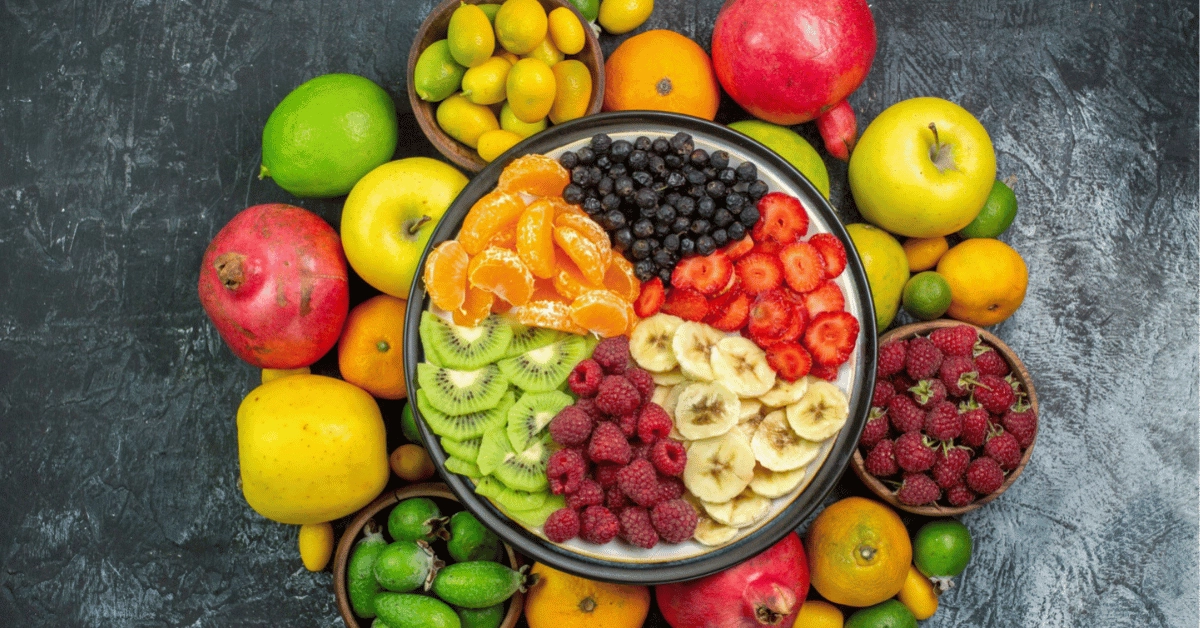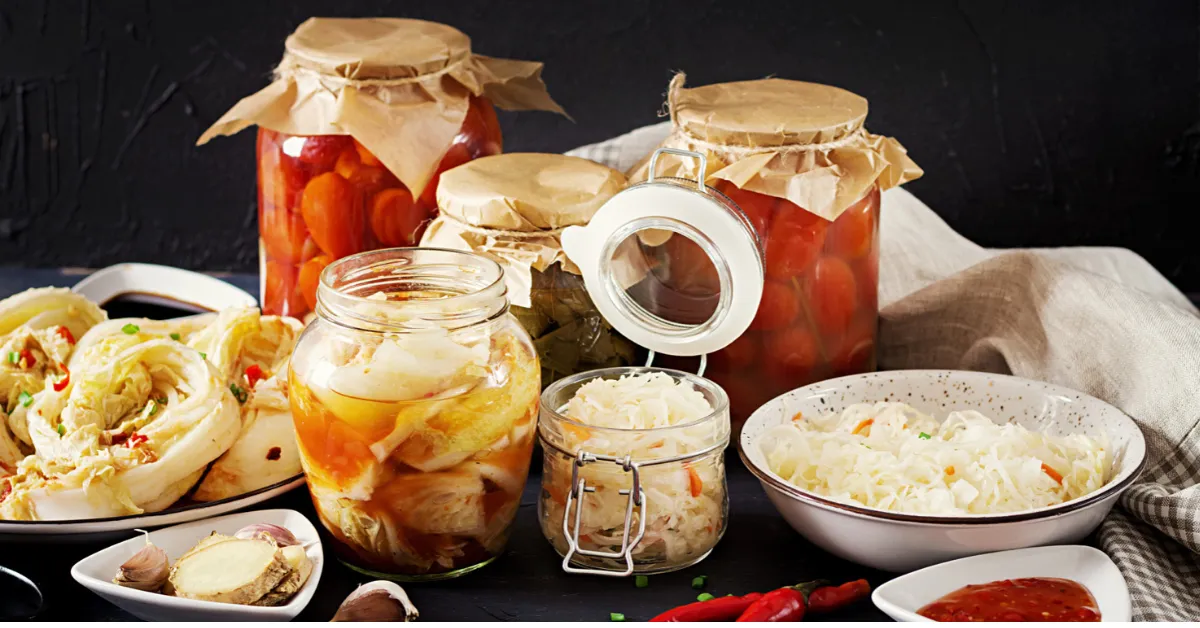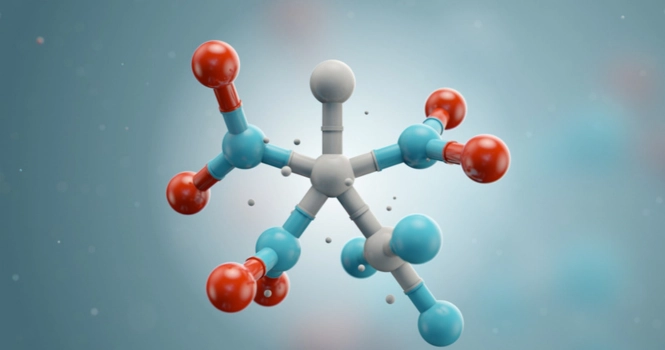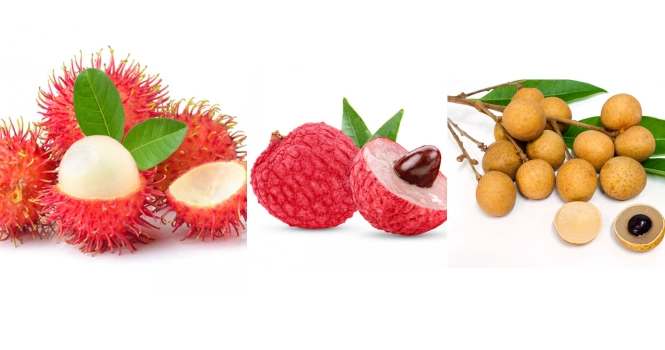Calories in Samosa: A Detailed Nutritional Breakdown
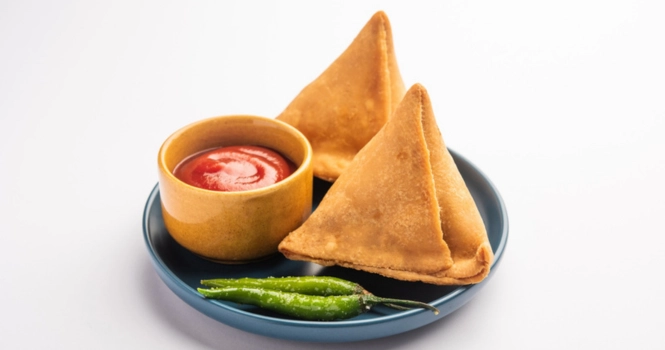
Enjoying hot samosas with tea is a delightful way to spend an evening. However, for those of us focusing on weight loss or adopting healthier eating habits, it’s important to consider the ingredients in samosas and assess their nutritional value.
Are samosas really a healthy choice?
Let’s find out,
Common ingredients and variations in Samosas
Samosas, with their delightful taste and crisp texture, have a special place in the world of snacks. They come in various forms, each with its unique blend of ingredients and flavors. Let’s explore some of the common ingredients and variations:
Common Ingredients
1. Dough: The outer layer is typically made from all-purpose flour or maida, though health-conscious recipes might use whole wheat or gluten-free alternatives. Key ingredients include flour, water, a bit of oil or ghee, and salt.
2. Filling: The most traditional filling is a spicy mixture of mashed potatoes, peas, and sometimes carrots. Spices like cumin, coriander, garam masala, and turmeric are commonly used for flavor.
3. Oil: For frying, a variety of oils can be used, like vegetable oil, canola, or even ghee for a richer taste.
How Many Calories Are In One Aloo Samosa (60 – 70 g)?
In one aloo (potato) samosa weighing between 60 to 70 grams, the approximate calorie content is generally around 150 to 200 calories. This estimate can vary depending on specific factors like the recipe used, the method of cooking (fried or baked), and the ratio of filling to dough.
Aloo samosas typically contain potatoes, spices, and sometimes peas or other vegetables, all enclosed in a wheat flour dough. The frying process, which is common for samosas, can significantly add to the calorie count.
Calories in 1 Average Sized Veg Samosa weighing 60 to 70g
| Nutrient | Quantity in 1 Vegetable Samosa ( 60 – 70g) |
| Calories | 262 kcal |
| Total Fat | 10-15 grams (approx.) |
| Saturated Fat | Varies (part of Total Fat) |
| Cholesterol | 10-30 mg (approx.) |
| Carbohydrates | 30-40 grams (approx.) |
| Sugars | 2-5 grams (approx.) |
| Proteins | 3-5 grams (approx.) |
| Fiber | 2-4 grams (approx.) |
| Sodium | 200-300 mg (approx.) |
| Potassium | 150-250 mg (approx.) |
| Iron | 1-2 mg (approx.) |
| Vitamins | Varies (depends on ingredients) |
| Calcium | 20-40 mg (approx.) 2% to 4% of RDA |
Filling used in Samosa Variations
Samosas can be filled with a variety of ingredients, often influenced by regional cuisines. Common fillings include:
1. Potatoes: Boiled, mashed, or cubed potatoes are a staple in traditional samosas, often mixed with spices.
2. Peas: Green peas are frequently added to potato fillings for a touch of sweetness and texture.
3. Spices: A blend of spices like cumin, coriander, garam masala, and turmeric is used for flavoring.
4. Onions: Chopped or sliced onions are often sautéed and added for extra flavor.
5. Meat: Ground lamb, beef, or chicken is used in non-vegetarian samosas, cooked with spices.
6. Paneer: This Indian cheese is a popular choice in vegetarian samosas, either alone or mixed with vegetables.
7. Lentils: Some samosas are filled with cooked and spiced lentils, particularly in certain regions or for a protein-rich vegetarian option.
8. Cheese: Modern variations sometimes include cheese, like cheddar or mozzarella, for a fusion twist.
9. Spinach: Chopped spinach, often combined with potatoes or paneer, adds a nutritious element.
10. Chilies and Herbs: Fresh herbs like cilantro and chilies are added for flavor and heat.
The fillings can vary greatly based on personal preference, regional variations, and dietary restrictions.
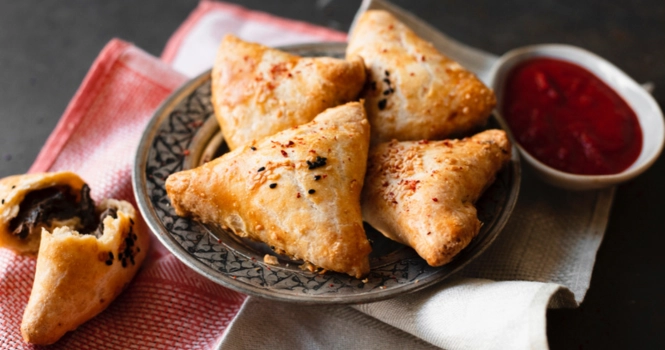
Detailed Caloric Breakdown of Samosas
| Samosa Type/Size | Weight (g) | Calories (Approx.) | Protein (g) | Fat (g) | Carbs (g) |
| 1 Small Samosa | 30 – 40 | 120 – 150 | 2 – 3 | 6 – 8 | 15 – 20 |
| 1 Medium Samosa (with potato) | 60 – 70 | 200 – 250 | 3 – 5 | 10 – 12 | 20 – 25 |
| 1 Medium Samosa (without potato) | 60 – 70 | 180 – 230 | 3 – 5 | 9 – 11 | 18 – 22 |
| 1 Large Samosa | 100 – 120 | 300 – 350 | 4 – 6 | 15 – 18 | 30 – 35 |
| 1 Samosa Slice | 20 – 30 | 100 – 130 | 2 – 3 | 5 – 7 | 10 – 15 |
| 2 Samosas | 120 – 140 (Medium) | 400 – 500 | 6 – 10 | 20 – 24 | 40 – 50 |
| 4 Samosas | 240 – 280 (Medium) | 800 – 1000 | 12 – 20 | 40 – 48 | 80 – 100 |
| 1 Onion Samosa | 50 – 60 | 160 – 200 | 2 – 4 | 8 – 10 | 17 – 22 |
| Per 100g Samosa | 100 | 250 – 300 | 4 – 6 | 12 – 15 | 25 – 30 |
Note:
- The weights are approximate and can vary based on the specific recipe and size.
- The nutritional values are also estimates and can differ based on the ingredients and cooking method.
Caloric Breakdown:
- Potato vs. Non-Potato: Samosas with potatoes generally have more carbohydrates, thus slightly higher calories than non-potato variants.
- Size Matters: Small samosas have fewer calories compared to large ones due to the smaller amount of filling and dough.
- Protein Content: Protein content in samosas is generally low. It varies slightly based on the filling (meat, cheese, vegetables).
- Fat Content: The fat content is relatively high due to frying. Baked samosas will have lower fat content.
Calories found in different quantities of Samosas
| Number of Samosas | Calories in Small Samosas (each 30-40g) | Calories in Medium Samosas (each 60-70g) | Calories in Large Samosas (each 100-120g) |
| 1 | 120 – 150 kcal | 200 – 250 kcal | 300 – 350 kcal |
| 2 | 240 – 300 kcal | 400 – 500 kcal | 600 – 700 kcal |
| 3 | 360 – 450 kcal | 600 – 750 kcal | 900 – 1050 kcal |
| 4 | 480 – 600 kcal | 800 – 1000 kcal | 1200 – 1400 kcal |
| 5 | 600 – 750 kcal | 1000 – 1250 kcal | 1500 – 1750 kcal |
| 6 | 720 – 900 kcal | 1200 – 1500 kcal | 1800 – 2100 kcal |
Note:
- The calorie counts for each size and number of samosas are approximate estimates.
- Actual calorie content can vary based on specific recipes, ingredients, and cooking methods.
- These values are based on average nutritional content for typical samosas.
How is 300 kcal burnt ?
The following activities will burn the 300 kcal
1. Walking (Brisk Pace): About 60-75 minutes. Walking at a brisk pace is a low-impact way to burn calories.
2. Running (Moderate Pace): Approximately 25-30 minutes. Running is a high-impact, high-intensity exercise that burns calories more quickly.
3. Cycling (Moderate Intensity): Around 30-40 minutes. Cycling, either on a stationary bike or a regular bike, is an effective calorie burner.
4. Swimming (Moderate Intensity): About 30-35 minutes. Swimming is a full-body workout that is efficient for burning calories.
5. Aerobics Class: Roughly 30-40 minutes. Aerobics classes, especially high-intensity ones, can help burn a significant amount of calories.
6. Jumping Rope: About 20-30 minutes. This high-intensity activity is excellent for cardiovascular health and calorie burning.
7. Hiking: Approximately 45-60 minutes. Hiking, especially on varied or hilly terrain, can burn a substantial number of calories.
8. Dancing (Fast-Paced): About 30-40 minutes. Dance styles that are fast and involve more movement can burn a significant amount of calories.
9. Strength Training: Approximately 45-60 minutes. While the immediate calorie burn might be less than cardio exercises, strength training builds muscle mass, which can increase overall metabolic rate.
It’s important to note that these are general estimates and the actual calories burned can vary.
Health Benefits of samosas
Samosas, a popular snack in many parts of the world, especially in Indian cuisine, are often enjoyed for their taste rather than their health benefits. While they are not typically considered a health food, there are some potential benefits when consumed in moderation as part of a balanced diet:
1. Energy Source: Samosas are high in carbohydrates, primarily from the dough and the potato filling, providing a quick source of energy.
2. Protein Content: Depending on the filling, samosas can offer a modest amount of protein, especially if they include ingredients like peas, lentils, or meat.
3. Culinary Enjoyment: Samosas, with their mix of spices and flavors, can be a delightful sensory experience, contributing to overall meal satisfaction.
To enjoy samosas in a healthier way, consider:
- Choosing baked samosas instead of fried.
- Making them at home to control the ingredients and cooking method.
- Enjoying them as an occasional treat rather than a regular part of your diet.
- Balancing your meal by pairing a samosa with healthier options like salads or grilled vegetables.
However, it’s crucial to remember that samosas are typically deep-fried, making them high in calories and fat, which can be a concern for weight management and cardiovascular health if consumed in excess. They are also often high in sodium, which can be a concern for blood pressure.
Is samosa good for Weight Loss?
Samosas are not ideal for weight loss. They are high in calories and fats, largely due to being deep-fried. The refined flour in the dough and the calorie-dense fillings can contribute to excess calorie intake.
For effective weight loss, focus on low-calorie, nutrient-rich foods. Opt for baked samosas in moderation, with mindful portion control and balanced nutrition, to align better with weight loss goals.
Is Samosa good for Weight gain?
Samosas can be effective for weight gain due to their high calorie and fat content. They are typically deep-fried, making them calorie-dense, which can contribute to an increased caloric intake – a key factor in weight gain. Also, the combination of refined flour, potatoes, and other fillings provides a substantial amount of carbohydrates and fats.
However, for healthy weight gain, it’s important to focus not just on increasing calorie intake, but also on consuming nutrient-rich foods.
Is Samosa good for Muscle gain?
Samosas are not ideal for muscle gain. Although they provide some protein, their high fat and carbohydrate content, especially from deep frying and refined flour, does not align well with muscle-building nutritional needs.
For effective muscle gain, a diet should focus on high-quality proteins, complex carbohydrates, and healthy fats, which samosas lack. It’s better to include foods like lean meats, dairy, legumes, and whole grains for muscle development, rather than relying on samosas.
Is samosa good for Diabetic Patients?
Samosas are generally not recommended for diabetic patients. They typically have a high glycemic index (GI) due to the refined flour in the dough and high-carb fillings like potatoes, which can lead to rapid spikes in blood sugar levels.
Also, the deep-frying process adds unhealthy fats, further complicating blood sugar management. For diabetes management, it’s advisable to consume foods low in GI, rich in fiber, and balanced in nutrients, which samosas do not typically provide.
Diabetic individuals should prioritize whole grains, vegetables, lean proteins, and healthy fats in their diet.
Is Samosa good for High BP Patients?
Samosas are not recommended for individuals with high blood pressure (BP). They are typically high in sodium and unhealthy fats due to the deep-frying process and the use of salt in the dough and fillings.
High sodium intake is linked to increased blood pressure and a higher risk of cardiovascular diseases. Additionally, the saturated and trans fats from frying can negatively impact heart health.
For managing high BP, a diet low in sodium and unhealthy fats, and rich in fruits, vegetables, whole grains, and lean proteins is advisable. Samosas, given their typical preparation, don’t align well with these dietary guidelines.
Is Samosa good for PCOS?
Samosas are generally not considered beneficial for individuals with Polycystic Ovary Syndrome (PCOS). This is due to several factors:
1. High Glycemic Index: Samosas are typically made with refined flour and potatoes, which have a high glycemic index. Foods with a high glycemic index can cause rapid spikes in blood sugar and insulin levels, which can worsen PCOS symptoms.
2. Rich in Unhealthy Fats: The deep-frying process of samosas introduces a high amount of unhealthy fats, which can lead to weight gain and worsen insulin resistance, both of which are detrimental in PCOS management.
3. Calorie-Dense: Samosas are calorie-dense, making it easy to consume more calories than needed, which can contribute to weight gain – a common concern for those with PCOS.
For managing PCOS, a diet that is high in fiber, low in refined carbohydrates, and includes healthy fats and lean proteins is typically recommended.
This helps in managing insulin levels and maintaining a healthy weight. Incorporating whole grains, fruits, vegetables, and lean protein sources would be more beneficial than consuming foods like samosas.
While an occasional samosa might be enjoyed, it should not be a regular part of a diet for someone managing PCOS.
Is Samosa good for Thyroid?
Samosas, a popular Indian snack, are typically not recommended for individuals with thyroid conditions, especially those related to weight management or autoimmune thyroid diseases like Hashimoto’s thyroiditis. This is due to a few key factors:
1. High Caloric Content:
2. Gluten and Inflammatory Ingredients: Samosas are usually made with wheat flour, which contains gluten. For those with autoimmune thyroid conditions, gluten can potentially aggravate inflammation and immune responses.
3. Unhealthy Fats:
Is Samosa good for Immunity?
Samosas, being high in calories and often fried in unhealthy oils, are not particularly beneficial for boosting immunity.
They lack essential nutrients like vitamins, minerals, and antioxidants that are crucial for supporting the immune system. For better immune health, a diet rich in fruits, vegetables, lean proteins, and whole grains is recommended.
Is Samosa good for Fat loss?
Samosas are not ideal for fat loss due to their high calorie content, primarily from fats and carbohydrates.
Being deep-fried, they contribute to increased calorie intake without providing significant nutritional benefits, which can hinder weight loss efforts.
For effective fat loss, a balanced diet with a focus on whole foods, lean protein, and lower-calorie options is more suitable.
Samosa Varieties and the Calorie Content of Each
| Samosa Variety | Size (g) | Approximate Calorie Content (per samosa) |
| Vegetable Samosa | 40 – 60g | 120 – 150 calories |
| Onion Samosa | 40 – 60g | 120 – 140 calories |
| Potato Samosa | 40 – 60g | 100 – 130 calories |
| Meat Samosa (Chicken/Beef) | 50 – 70g | 130 – 160 calories |
| Cheese Samosa | 50 – 70g | 150 – 180 calories |
| Paneer (Cottage Cheese) Samosa | 50 – 70g | 140 – 170 calories |
| Spinach and Cheese Samosa | 50 – 70g | 150 – 180 calories |
| Sweet Samosa (with jaggery or coconut filling) | 40 – 60g | 120 – 150 calories |
| Corn and Peas Samosa | 40 – 60g | 110 – 140 calories |
| Fish Samosa | 50 – 70g | 130 – 160 calories |
Adverse effects of Samosas
While samosas are a delicious and popular snack, they can have several adverse health effects, especially when consumed in excess or as a regular part of one’s diet. The main concerns are due to their typical preparation and ingredients:
1. High in Calories and Fat: Samosas are usually deep-fried, leading to a high fat content, particularly saturated fats. Regular consumption of high-fat foods can contribute to weight gain and obesity.
2. Risk of Cardiovascular Diseases: The oils used for frying, often high in trans fats, can increase LDL (bad) cholesterol levels and decrease HDL (good) cholesterol levels, potentially leading to an increased risk of heart disease.
3. High in Sodium: Samosas often contain a significant amount of salt, contributing to high sodium intake, which is linked to increased blood pressure and a higher risk of heart disease and stroke.
4. Digestive Issues: For some individuals, the oiliness and spices in samosas can cause indigestion, acid reflux, or upset stomach, especially if consumed on an empty stomach or in large quantities.
5. Risk of Type 2 Diabetes: Frequent consumption of high-calorie, high-fat, and high-carb foods like samosas can contribute to the development of insulin resistance, a precursor to type 2 diabetes.
6. Nutrient Imbalance: While samosas do contain some nutrients, they are not a balanced source of nutrition and can lead to an imbalanced diet if consumed regularly in place of more nutritious foods.
7. Food Allergies and Intolerances: Ingredients in samosas, such as gluten (in the dough) or specific spices, can trigger allergic reactions or intolerances in susceptible individuals.
Also Read , Calories in Pain Puri, India’s Fav evening snack
Frequently Asked Questions
How many calories does 1 samosa have?
The calorie content in one samosa can vary depending on its size and the ingredients used.
On average, a standard-sized samosa, which is often filled with a mixture of potatoes, peas, and spices, encased in a wheat flour crust, typically contains approximately 250-300 calories.
The cooking method, such as frying, which is the most common, can also add to the calorie count.
Can we eat 1 samosa during weight loss?
Yes, you can include a samosa in your diet even when you’re trying to lose weight. However, it’s essential to consider it as part of your overall daily caloric intake.
Since samosas are high in calories and often fried, they should be consumed in moderation. Balancing your diet with nutrient-rich foods and maintaining a regular exercise routine are crucial for effective weight loss.
It’s also helpful to consider healthier cooking methods like baking or air frying to reduce calorie content.
How many calories in a Punjabi Samosa?
A Punjabi samosa, known for its generous size and rich filling, typically contains about 260-300 calories each.
This variation of samosa is usually stuffed with a hearty mix of spiced potatoes, peas, and sometimes meat, enclosed in a crispy crust.
The calorie content can be higher if the samosa is larger or if additional ingredients like nuts or raisins are included. The cooking method, primarily deep frying, also contributes significantly to the calorie content.
How many calories are in 200 grams of samosa?
The calorie content in samosas can vary based on their ingredients and preparation method. On average, a standard samosa weighs about 60-70 grams and contains approximately 250-300 calories.
Therefore, 200 grams of samosa (roughly equivalent to three standard-sized samosas) would contain about 750-900 calories.
Is it OK to eat 1 samosa?
Yes, it’s okay to eat 1 samosa, especially as part of a balanced diet. Moderation is key.
While samosas are high in calories and often fried, enjoying one occasionally can be part of a healthy eating plan. Pairing it with healthier foods and maintaining an overall balanced diet is important.
Is samosa healthy or junk?
Samosas are generally considered more of a treat or indulgence rather than a healthy food. They are typically high in calories, carbohydrates, and fats, especially if fried.
However, labeling them strictly as “junk” might be an oversimplification. The filling can provide some nutritional value, such as proteins and vitamins if it includes vegetables or meat.
The key is to consume them in moderation and as part of a varied diet. For a healthier alternative, consider samosas that are baked instead of fried, and be mindful of portion sizes.
Is it OK to eat samosa once a week?
Yes, it is generally okay to eat a samosa once a week, especially as part of a balanced diet.
Moderation is important when it comes to foods that are high in calories and fats like samosas. If the rest of your diet is nutritious and you maintain an active lifestyle, enjoying a samosa once a week can be OK.
Can we burn calories after eating samosa?
Yes, you can burn calories after eating a samosa. Just like with any food, the calories consumed can be offset through physical activities.
The key to balancing the calorie intake from a samosa is to engage in exercises that burn an equivalent number of calories, which varies depending on the type and intensity of the activity.
How to burn 3 samosa calories?
To burn the calories from consuming 3 samosas (which would amount to approximately 750-900 calories in total, based on an average of 250-300 calories per samosa), you can engage in various physical activities.
The specific amount of time and type of exercise required to burn these calories will depend on factors like your body weight, metabolic rate, and exercise intensity.
For instance, activities like running, cycling, swimming, or high-intensity interval training (HIIT) can effectively burn a high number of calories. You might need to engage in such activities for an extended period, such as running for about 1 to 1.5 hours, cycling for 1.5 to 2 hours, or a prolonged HIIT session, to burn off the calories equivalent to 3 samosas.
How many calories in 2 veg samosas?
Two vegetable samosas typically contain between 500 to 600 calories in total. This estimate is based on the average calorie content of one vegetable samosa, which is around 250 to 300 calories, depending on the size and specific ingredients used.
Can I eat samosa once in a month?
Yes, you can eat a samosa once a month as part of a balanced diet.
Consuming a samosa occasionally, such as once a month, is unlikely to have a significant impact on your overall health or diet, especially if you are otherwise eating a nutritious and balanced diet and maintaining an active lifestyle.
Moderation and the context of your overall eating habits are key.
Calories in Samosa Pav
The calorie content of a “samosa pav” — a dish that combines a samosa with a pav (a type of Indian bread roll) — can vary depending on the size and specific preparation of both the samosa and the pav. However, a general estimate can be provided:
- Samosa: On average, one vegetable samosa contains about 250-300 calories.
- Pav: A single pav, which is similar to a small dinner roll, typically contains around 150-200 calories, depending on its size and ingredients.
When combined, a samosa pav would likely contain approximately 400-500 calories. This is a rough estimate and the actual calorie count could be higher or lower based on the specific recipe and the way both the samosa and pav are prepared (for example, if additional butter or chutney is added).
![]()



